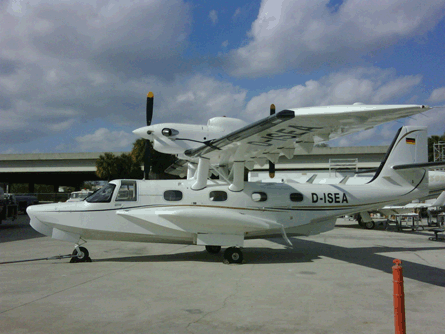Dornier Seaplane has pushed back until the third quarter of the year the planned relaunch of its Seastar amphibian because of a lower than expected sales tally and lack of available and willing investors. The Seastar first flew in 1984, and three were built in Germany before production ended in 1991.
Dornier had hoped to resurrect the 12-seat, all-composite aircraft this month, but admits the financial meltdown has scuppered its plans. "When we began taking orders for the Seastar last October we could not have anticipated the impact of the global economic slowdown," says Dornier Seaplane chief executive Joe Walker.
He is convinced, however, that the market is ripe for seaplanes from charter, private and commercial operators around the world that want swift, direct and low-cost transport to coastal towns, islands and remote locations. "There is a lot of interest in the Seastar. We are currently juggling several fleet inquires that will firm up over the next few months," he says.
 |
|---|
© Dornier |
Walker says Dornier has revised its business strategy as it no longer needs to kick-start the production on the back of 25 orders as originally planned. "We are not serving a mass market," Walker says. "To make the programme work, Seastar only needs 12 orders for the first two years [of production]". Dornier then plans to manufacture 12 aircraft a year, ramping up to 24 and 48 a year.
Walker says Dornier no longer requires an additional $150 million to bring the aircraft to full production status as set out in the its original business plan. He says $65 million "will be enough to fund the working capital to put the aircraft back into production and we have extended out bridge financing with the Dornier family until we can raise this investment".
The Seastar programme has been wholly funded by Dornier, which has already invested $150 million to design, develop and certificate the Pratt & Whitney Canada PT6-135A-powered aircraft in Europe and the USA in 1990 and 1991 respectively.
Dornier is continuing to build its team and focus on sales and marketing initiatives for the North American and international markets, where market demand could reach up to 50 Seastars a year, the company predicts. It has recently refurbished a Seastar with a new paint scheme and executive interior for use as a demonstrator.
Dornier plans to outsource composite fabrication for the Seastar and is eyeing European companies, including Germany's Grob, as a possible option. The parts will be shipped to an as-yet undecided final assembly facility in the USA. "We recently moved to Punta Gorda, Florida to 'test drive' this site for 90 days," it says, adding that it plans to make the final production site announcement by the time of the AirVenture show in Oshkosh in July.
The first nine aircraft will be priced at $5.5 million and be equipped with the original round dials on the flightdeck. Later models will have glass cockpits, air conditioning and autopilots and will sell for $6 million, Walker says.
Source: Flight International












































